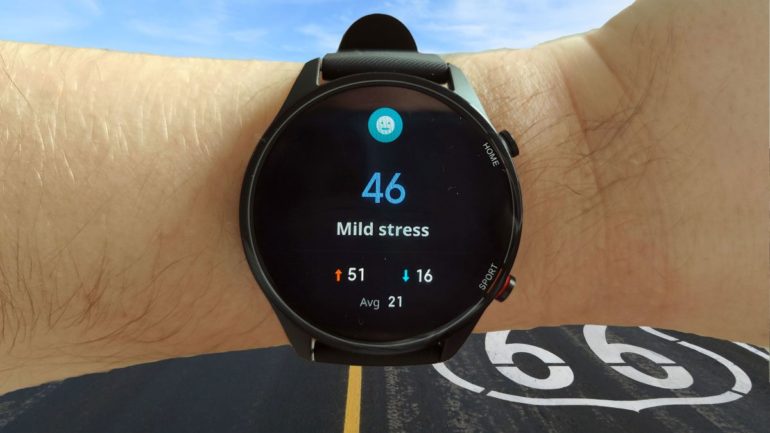I’m currently digitally running the length of the US Route 66, using my smartwatch to track distance on runs and walks, which I can then log in a giant map – you can read all about my venture in the first of my Route 66 columns here.
Where am I?
Column number: 2
Date written: 17/03/21
Days in: 19
Current location: Dwight, IL
Distance traveled: 73.85 miles
Distance left: 2204.14 miles
Current tracker: Xiaomi Mi Watch
Pivotal to this venture is the smartwatches I use, which can record and evaluate each of my workouts – it helps that I cover them for TechRadar, so I can incorporate my testing into my two-year digital adventure. However I’ve found the way I use these handy little devices has changed since I began the undertaking (and since I started running a lot more at the beginning of the lockdown).
When testing smartwatches and fitness trackers, I make sure to wear them as near to constantly as possible – this lets me evaluate how they feel on the wrist, how long their batteries lasts, and whether their lifestyle and health features work.
Between testing units though, I used to keep wearing smartwatches, simply to reap the benefits of them. The notification reminders, step counters, and easily-accessible stopwatches and timers was always pretty useful.
I don’t anymore though – now, I’ll often only strap on some wearable tech if I’m about to go for a run, and if I’m just lounging at home, I’ll keep my wrists clear. I only noticed this habit recently, and it got me wondering why this is.
Finding my off switch
Strapping on my smartwatch is now part of my pre-run ritual, a metaphorical handcuff that clasps me to my commitment to get outdoors and do some exercise.
This isn’t why I remove my watch at all – it’s just something I noticed when analyzing my watch use for this article – but the ability to initiate this ‘go mode’, by strapping up my watch is really useful for motivation.
After all, part of the human experience is creating a series of rituals to psych ourselves up for things we don’t want to do: the coffee, shower, bagel before going to work, for example. While I like running, I also really don’t like running, and gradually building up to a long run can help me get ready for it.
And, perhaps more importantly, removing my watch after a workout is a signal to myself that it’s time to end my ‘go mode’.
When the watch is on, I’m healthy – I’m drinking lots of water, doing workouts, charting the movements in my heart rate. But when the watch is off, I don’t have to worry about that: I can change back into something comfy, and sit on my sofa for work, and have another hot chocolate. I’m in a totally different headspace.
Off the map – and the chart
When you’re wearing a smartwatch, it’s constantly monitoring you – every breath you take and every move you make is charted, ready to be beamed up at you when you tap your wrist or plotted along graphs in an app.
That can be really useful for health-focused individuals, or people who want to see changes in their body over time. Sometimes, though, the demystifying effects of all these numbers and graphics can be a little much – it can be nicer feeling well-rested, than having your watch give you a percentage on your rest levels.
Between smartwatch test periods, I now enjoy this down-time, being able to judge for myself how well I slept, how much energy I feel I have, or if I need to get up and stretch my legs.
It felt strange, at first – ‘what’s the point of sleeping if I’m not earning sleep points? What’s the point in going for walks if it’s not filling up that health ring’ – but I gradually came to realise that I’d been conflating my watch’s judgement of my health, for my own.
Now, a lapse in a graph on a health app doesn’t feel like a failure, but just an indication that I took my watch off.
Can smartwatches factor this in?
Smartwatches are designed to be worn pretty constantly, but after scrutinizing my own habits, I can’t help but feel like this is a bad thing.
Now I’ve learnt to have a healthy on/off balance with my smartwatch, it feels like this is a good way to live – I can have time off from constant fitness tracking, and can easily get in the mindset for exercises when I do them. But when I take time off from the watch, there’s often a big hole in the graph.
For example, I used to religiously walk at least 10,000 steps a day (back when physical offices were real things to go to). If I didn’t wear a watch for a day, my daily step graphs would have a gaping hole, which would be reflected in my weekly, monthly and yearly averages.
As you can imagine, this skewed average was annoying which, in turn, stopped me taking the watch off. But it doesn’t have to be like this.
If a smartwatch could recognize if it wasn’t being worn for a day, and simply eradicate that day from various averages, it’d facilitate a more healthy relationship with the device.
This doesn’t just have to apply to steps – perhaps if I took my watch off in the night, because its sleep tracking potential didn’t justify the weight on my wrist, the night would be voided – rather than deciding I woke up at 1am.
Sure, one could argue this would give people an ‘easy out’ for goals they’re reluctant to meet – ‘if I don’t do my exercise today, I’ll just take off the watch, so it thinks I did the workout without it’ – but if you’re that determined to avoid your fitness goals, the judgements of a little screen on your wrist may not stop you.
I’ve still got over 2,200 miles to run and walk in just over 23 months, so I’m probably not at risk of skimping on my workouts. But when I spend the subsequent year confined to my bed playing video games all the time, it’d be nice to be able to continue a healthy relationship with my tech.



